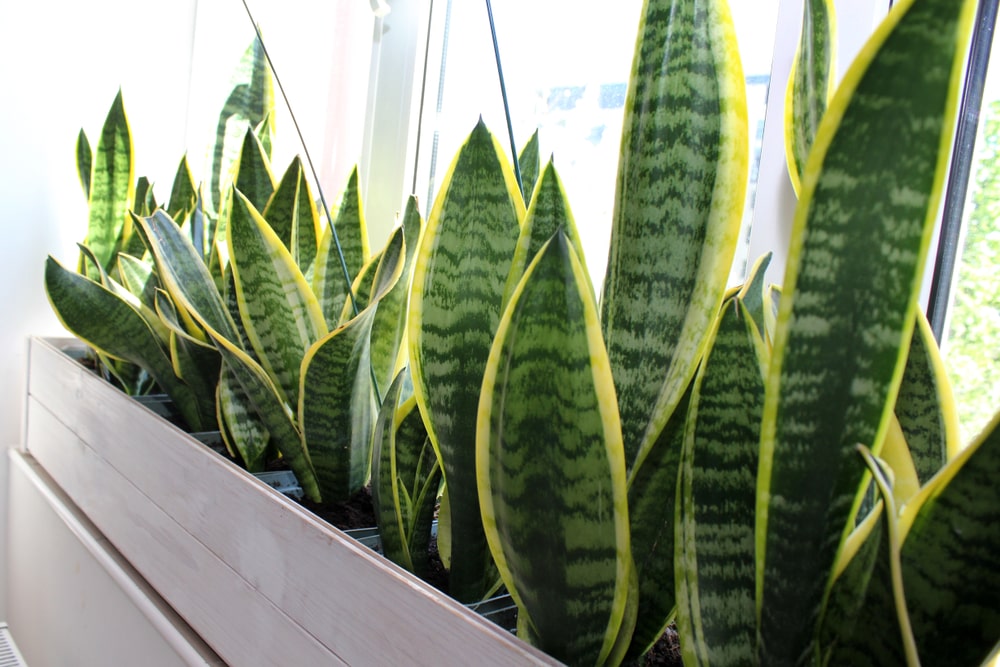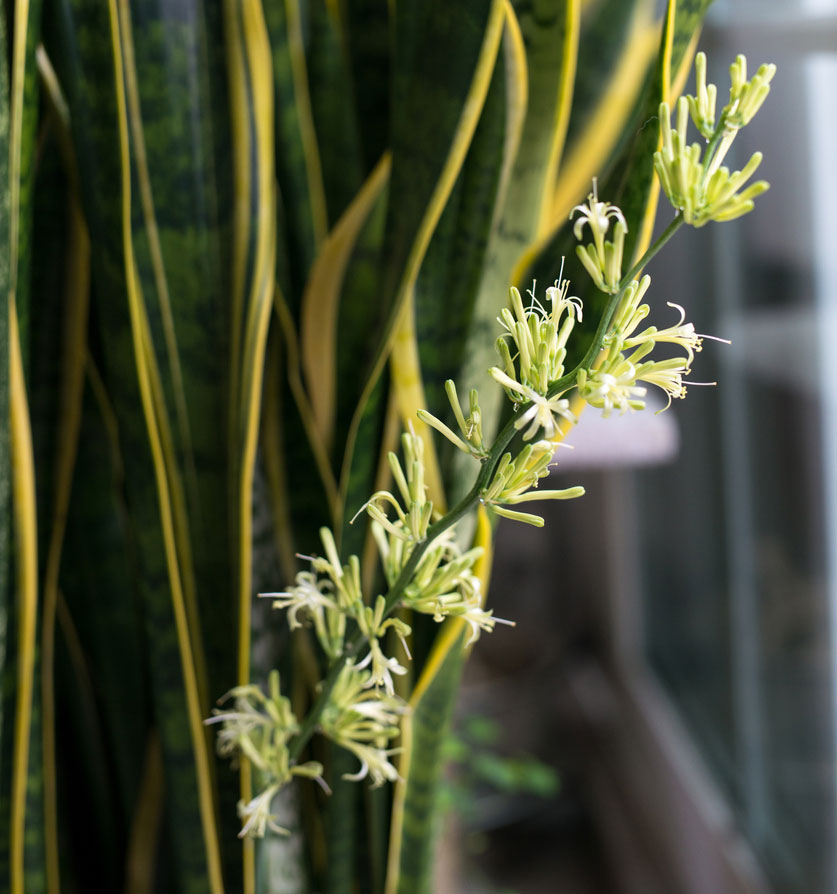
Have you struggled with houseplants in the past? That expensive palm tree for your living room turns yellow and brown no matter how well you try to take care of it. No matter what you do or how hard you work, your African violets wilt, your peace lilies droop from thirst, and everything in between fades away in a matter of weeks or months. Has it gotten so bad that even your plastic ficus will drop leaves when you’re in the room? Let’s face it; not everyone can claim to have a green thumb. Don’t give up yet! When all else fails, give Sansevieria a shot.
Sansevieria, also known as snake plant and mother-in-law’s tongue, has earned a reputation for being nearly indestructible. They come in many shapes and sizes and make great plants for the corner of a room, on tabletops, and in outdoor living spaces. Despite their virtual indestructibility, there are a few things you’ll need to know to aid in your success.
How often to water a snake plant
If there is one weakness that can doom you, it is overwatering. Most houseplants enjoy a period of drying out between waterings, and snake plants are no exception. In fact, unlike many varieties of houseplants, these guys can tolerate a few periods of drought when you forget to water for a few days. Or a week. We know who you are! However, too much watering can cause a disease known as basal rot, which causes rotted base roots and yellowing leaves that slowly die back over time.
Water your snake plant once or twice a week, depending on your home’s dryness, and reduce watering to just once or twice a month during the winter months. When watering, aim to moisten the soil around the edges of the leaf stalks, avoiding the heart of the plant to prevent water from getting trapped and causing rot.
Snake plant light requirements
Light is an easy one! Snake plants can handle any lighting conditions. While you’ll ideally want to place it in a brightly lit room without direct sunlight, it can thrive in bouts of direct sunlight or even a deeply shaded room if that is all you have available.
The best temperature for snake plants
Snake plants thrive in temperatures above 50 degrees. It also requires very little humidity, so occasionally misting the air is not required. If you keep your Sansevieria outdoors on a screened-in patio or outdoor living space, be mindful of falling temperatures in the fall and early spring. Any temperatures below 50 degrees will damage the foliage, so be sure to move indoors when temperatures begin to fall.
When to repot a snake plant
It is seldom required to report Sansevieria. Potting is probably only necessary when the plant’s roots do damage to your existing pot. When you do put it in a new container, make sure to use loose, well-draining soil. Rich soils will hold more moisture which you do not want with most houseplants.
How to make your snake plant bloom
While the striking, sword-like leaves of a snake plant are the star of the show, with a bit of care, they can really shine. Gently wipe the leaves with a soft cloth to remove any dust, and for an added boost, use a foliage cleaner to give them a glossy finish. If you keep your plant in optimal conditions, it may surprise you with small, fragrant white flowers from time to time—an extra reward for your care!
Visit The Great Big Greenhouse for All Your Houseplant Needs!
With minimal upkeep and impressive resilience, the snake plant is the perfect houseplant for those seeking a beautiful, low-maintenance addition to their home. Visit us at the Great Big Greenhouse location in Richmond, VA to explore our stunning selection of snake plants and receive expert advice from our friendly staff.



You did not mention feeding. I have several plants and have not feed them ever.
?? Your thoughts on feeding.
Sansevieria doesn’t require much fertilization at all. Maybe apply an all-purpose general fertilizer in the warmer months to help give it a little extra nutrition, but don’t go overboard. I wouldn’t fertilize at all during the fall or winter seasons.
I want to warn about the Sansevieria plant around cats. If cats chew on them it will make their mouths/tongues swell up. I did not know this when I had a litter of five kittens running free in my house. All of them chewed on my snake plant. It was not fatal to them, but until their mouths returned to normal (day or two), they might have thought they were dying. Most likely, the plant will affect any mouth like this. The plant is a wonderful plant, just be responsible with it.
Here’s a bit of plant trivia, the famous Olduvai Gorge where Louis Leakey found so many early hominid fossils is named for the wild Sansevieria found there – Oldupai means “the place of the wild sisal” (Sansevieria), in Maasai.
When is weather in the garden this year
Deborah, Weather in the Garden is on Saturday, March 23, this year! Can’t wait. It’s so much fun.